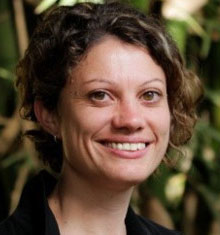
On October 27, 2022 in Nairobi, Kenya and online, a team of researchers launched a new tool that outlines how an integrated landscape approach can be adapted for displacement or refugee settings. Called ‘Guidance for a Landscape Approach in Displacement Settings’ (GLADS), the tool is an EU-funded initiative led by the Center for International Forestry Research and World Agroforestry (CIFOR-ICRAF) in partnership with stakeholders.
The tool’s developers set out to bring the views of refugees, communities, governments and agencies together in five guidance notes, on the following themes: (i) understanding the displacement setting landscape; (ii) developing a common landscape-scale vision for refugee hosting landscapes; (iii) implementing contextually appropriate integrated interventions targeting sustainability in displacement settings; (iv) ensuring appropriate monitoring, evaluation, learning and adaptation systems are in place; and (v) ensuring gender mainstreaming. The guidance notes are accompanied by examples from the sites, and links to relevant tools.
Speakers drew on experiences from consultations in Cameroon, Kenya and Uganda, to outline how partners can reconcile multiple interests – and sometimes-conflicting resource uses – to establish common visions by communities for sustainable and equitable use of limited natural resources.
Understanding complex contexts
Robert Nasi, Chief Executive Officer (CEO) ad interim of CIFOR-ICRAF, noted during his opening remarks the increasing importance of such guidelines in the displaced settlement context, given that within the next decade more than 150 million people are likely to face displacement due to climate impacts. “When people are displaced, they move to a place where they feel safer, but such places are often not resource-rich – usually, they are in a state of depletion,” Nasi said. Because emergency aid is not intended to solve long-term problems, increased pressure on local populations, resource scarcity, and culture clashes may result in the longer term, he said.
Phosiso Sola, a scientist at CIFOR-ICRAF and the event’s moderator, said that participation and engagement are two key elements of the guidelines, which aim to ensure that “the voices of the voiceless” are heard – thus helping to build resilience in such settings.
CIFOR-ICRAF scientist and co-author Abdon Awono, who met with communities in Cameroon, said that “beyond the government, the tool is also useful for all the organizations working there, refugees and local communities. All these groups should be incorporated and interested in these guidance notes, to find common ground on how interventions are implemented.”
Jean Bertin Koguem, a community actor in Cameroon, said an influx of refugees from the Central African Republic has caused severe forest resource depletion in that country. The stakeholder-informed guidelines brought together communities, agencies, and local government to shape future sustainability strategies and promote improved resource-sharing. “We have restored forest landscapes following the guidelines on protected areas, integrated with agriculture and the needs of the community,” he said. He said that climate-smart farming methods – such as producing wood for energy while harvesting honey for food and livelihoods – are now possible within the same landscape, and refugees are empowered to develop agricultural produce.
An integrated approach for long-term sustainability
From Uganda’s Office of the Prime Minister, John Paul Magezi said that the guidelines supported a water response plan and guidance on forest management for refugees arriving from the Democratic Republic of Congo (DRC) and South Sudan. Francis Ekiru, Head of Office for the Food and Agriculture Organization of the United Nations (FAO) in Kakuma Camp, Kenya, said implementing these guidelines improves all partners’ awareness of the use of environmental resources, and their potential deployment for sustainability and socio-economic development.
In his closing remarks, Philippe Mayaux, Team Leader for Environment, Agriculture and Climate Change at the Delegation of the European Union in Cameroon and for Equatorial Guinea, said that while guidelines on fuelwood and forest management already exist, the new tool meets the need for a broader context of implementation: “the focus was to have something more holistic,” he said.
The tool will be especially useful for aid agencies, who are aware of environmental issues in refugee contexts but often do not have a toolbox of all the critical elements to consider for implementation, said Mayaux. While challenges such as environmental degradation, climate change, and population increase in refugee contexts will not disappear overnight, such guidelines provide a “long-term strategy to cope,” he said.
Overall, GLADS aims to guide stakeholders in building context-relevant understanding, inclusive approaches, continuous learning, and outcomes towards sustainability and resilience in refugee hosting or displacement settings. Further learning in multiple sites is encouraged and will be promoted: CIFOR-ICRAF invites stakeholders to provide inputs and reflections on effective ways for adopting an integrated landscape approach for sustainability and resilience in refugee hosting or displacement settings.
This initiative is part of the Governing multifunctional landscapes in Sub-Saharan Africa: Managing trade-offs between social and ecological impacts (GML) project, which is financed by the European Union.
We want you to share Forests News content, which is licensed under Creative Commons Attribution-NonCommercial-ShareAlike 4.0 International (CC BY-NC-SA 4.0). This means you are free to redistribute our material for non-commercial purposes. All we ask is that you give Forests News appropriate credit and link to the original Forests News content, indicate if changes were made, and distribute your contributions under the same Creative Commons license. You must notify Forests News if you repost, reprint or reuse our materials by contacting forestsnews@cifor-icraf.org.












